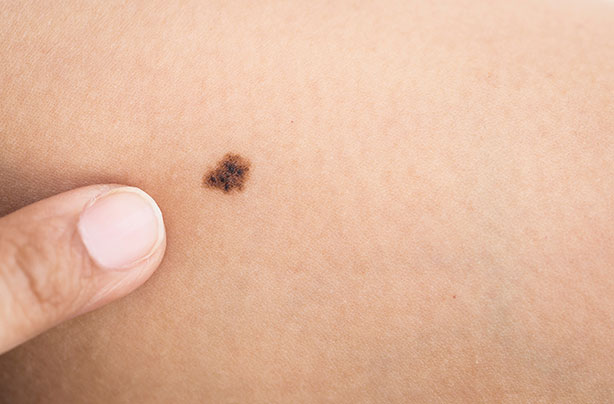Having more than 11 moles on one arm indicates 'higher than average cancer risk'
A new study published in the British Journal of Dermatology has suggested that having a higher number of moles could indicate an increased risk of skin cancer.

A new study published in the British Journal of Dermatology has shown that people with more than 11 moles on one arm could have a higher risk of developing cancer.
The research, which took into account data from 3,000 sets of twins in the UK, showed that those with more than 11 moles on one arm were at a higher risk of skin cancer or melanoma, whilst those with more than 100 moles all over their body were at five times the normal risk.
Counting the moles on the right arm was found to be a helpful indicator of the total number of moles an individual may have - the women in the study with more than seven moles in this area had nine times the risk of having more than 50 on their whole body.
Those with more than 11 on their right arm were more likely to have more than 100 on their body in total, meaning they were at a significantly higher risk of developing a melanoma.
Having more than 100 moles across the total body can be an indicator of a high risk of skin cancer
Lead author of the study, Simone Ribero of King's College London, explained: 'The findings could have a significant impact for primary care, allowing GPs to more accurately estimate the total number of moles in a patient extremely quickly via an easily accessible body part.'
However, Dr Claire Knight, health information manager at Cancer Research UK, said that whilst the study findings could be useful, less than half of melanomas develop from existing moles, and other areas should be taken into account.
GoodtoKnow Newsletter
Parenting advice, hot topics, best buys and family finance tips delivered straight to your inbox.
'It's important to know what's normal for your skin and to tell your doctor about any change in the size, shape, colour or feel of a mole or a normal patch of skin,' she stated.
'And don't just look at your arms - melanoma can develop anywhere on the body, and is most common on the trunk in men and the legs in women.
Over-exposure to UV light, which predominantly comes from the sun itself or sources like sunbeds, is one of the main contributing external risk factors for skin cancer, but the NHS also lists 'a family history of the condition' 'pale skin that burns easily' and 'a large number of moles or freckles' as areas that can also have an influence.
If you are worried about a mole on any area of your body, seek the advice of your GP immediately.
Trusted, informative, and empathetic – GoodToKnow is the ultimate online destination for parents. At GoodtoKnow, our mission is 'simple': we're trying to make sense of parenthood. On the site, you'll find everything you need for a happy, healthy family life. Our huge archive of content includes more than 18,000 articles and 1,500 how-to videos. These include expert-backed advice features on parenting, dealing with relationship changes after having a baby, self-care for mums and managing your family finances. We also feature tried-and-tested product reviews and buying recommendations for every stage of family life - from prams and Moses baskets to birthday gifts and top toys.